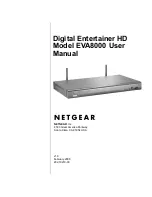
–
Memory Power Management
Select this choice to enable or disable power management on memory. If you choose Disabled,
it will provide maximum performance but minimum power savings. If you choose Automatic, it is
suitable for most applications.
–
Proc Performance States
Select this choice to enable or disable processor performance states. Enabling processor
performance states (Intel Speedstep Technology) saves power by reducing speed and voltage as
the microprocessor utilized is reduced.
Note:
Some operating systems must have the correct power profile selected to take advantage
of this feature.
–
C1 Enhance Mode
Select this choice to enable or disable C1E (C1 Enhanced) state. Enabling C1E (C1 Enhanced) state
can save power by halting CPU cores that are idle.
Note:
An operating system that supports C1E state must be installed to take advantage of this
feature. Changing this setting will be effective after the next system reboot.
–
QPI Link Frequency
Select this choice to determine the desired microprocessor QPI link frequency. Maximum
performance mode maximizes performance. Balanced mode offers a balance between performance
and power. Minimal power maximizes power savings.
–
Turbo Mode
Select this choice to enable or disable turbo mode. Enabling turbo mode can boost the overall
microprocessor performance when all microprocessor cores are not fully utilized. A microprocessor
core can run above its rated frequency for a short period of time when it is in turbo mode.
–
CPU C-States
Select this choice to enable or disable ACPI C2 Processor Power states. It will be effective after the
next system reboot.
–
Package ACPI CState Limit
Select this choice to determine the level of C-state. Selecting a higher C-state limit allows the
microprocessors to consume less power when they are idle. If you experience problems with legacy
operating systems, set the ACPI Cstate limit to C2.
–
Power/Performance Bias
Select this choice to determine how the power management of the microprocessor is controlled.
You can choose either Platform Controlled (system) or OS Controlled (operating system) to control
the setting. Not all operating systems support this feature.
–
Platform Controlled Type
Select this choice to determine how to balance between performance and power consumption.
Choosing Maximum Performance will disable power management functions and allow the most
aggressive use of turbo. Choosing Minimal Power will maximizes the use of power management
features for least power consumption and disable turbo.
–
Legacy Support
Select this choice to view or set legacy support.
Note:
In the legacy mode, this system has limited ROM space for installed options. At most four
network interface cards (NICs) are supported for legacy PXE boot. If more than four NICs are installed,
legacy PXE boot will not be attempted on some of the NICs. To enable legacy PXE boot on the desired
NIC connectors, prioritize the desired NIC connectors by changing the
Rom execution Order
or disable
the NIC connectors that you do not use from
Enable/Disable Adapter Option ROM Support
menu.
Configuration information and instructions
101
Summary of Contents for System x3630 M4
Page 1: ...Lenovo System x3630 M4 Installation and Service Guide Machine Type 7158 ...
Page 6: ...iv Lenovo System x3630 M4 Installation and Service Guide ...
Page 14: ...xii Lenovo System x3630 M4 Installation and Service Guide ...
Page 108: ...94 Lenovo System x3630 M4 Installation and Service Guide ...
Page 134: ...120 Lenovo System x3630 M4 Installation and Service Guide ...
Page 186: ...172 Lenovo System x3630 M4 Installation and Service Guide ...
Page 844: ...830 Lenovo System x3630 M4 Installation and Service Guide ...
Page 868: ...854 Lenovo System x3630 M4 Installation and Service Guide ...
Page 1026: ...1012 Lenovo System x3630 M4 Installation and Service Guide ...
Page 1030: ...1016 Lenovo System x3630 M4 Installation and Service Guide ...
Page 1038: ...Taiwan BSMI RoHS declaration 1024 Lenovo System x3630 M4 Installation and Service Guide ...
Page 1040: ...1026 Lenovo System x3630 M4 Installation and Service Guide ...
Page 1049: ......
Page 1050: ......
















































